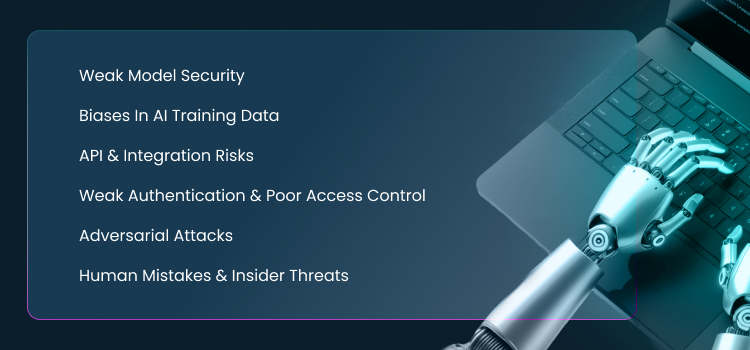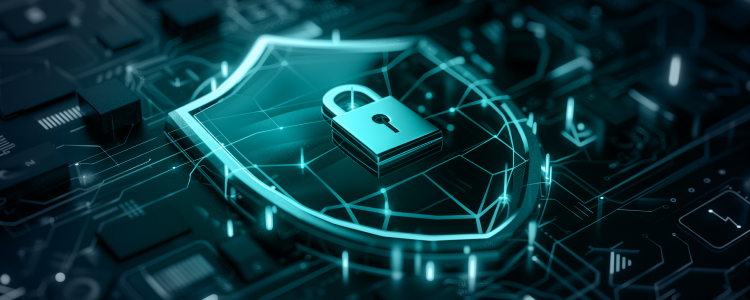
AI systems handle sensitive data, such as financial records, medical information, and personal details. When security fails, this data is exposed, leading to fraud, identity theft, and privacy violations.
Hackers target weak defenses, misconfigured AI models, and open data connections. A single flaw can cause massive leaks, putting businesses and individuals at risk.
This guide breaks down what is an AI data breach, why it’s rising, and how to protect your information.
What Is an AI Data Breach?
An AI data breach occurs when sensitive data—such as personal, financial, or health data—is accessed without permission. It isn’t the same as a general cyberattack. While some cyberattacks disrupt systems, a data breach specifically involves stolen or exposed data.
AI models process massive datasets. If the models aren’t properly secured, flaws in their systems can leak private information. Weak encryption, poor access control, and exposed APIs often open the door to these breaches.
Understanding how AI handles data is key to protecting it. The next section will discuss the biggest causes of AI data breaches and how attackers exploit security gaps.
Why Are AI Data Breaches Increasing?
Many companies are expanding AI capabilities but often lack proper security knowledge. Adequate security policies make it easier for hackers to exploit system flaws and steal sensitive information.
Another major challenge is that AI models evolve as they learn from new data. Over time, security protections that worked before may not be enough. If companies don’t update their systems regularly, AI models can develop unseen weaknesses, increasing the risk of data leaks.
The lack of clear AI security regulations is a key reason for rising breaches. Industries like banking and healthcare have strict data protection rules, but AI security laws remain inconsistent. Many companies don’t follow set standards, leaving AI data vulnerable to attacks.
In March 2023, a security bug in OpenAI’s ChatGPT led to a data leak. Some users could see other people’s chat histories, billing details, and personal information. The issue stemmed from an open-source library flaw, exposing data from 1.2% of ChatGPT Plus subscribers.
Common Causes of AI Data Breaches
AI has unique security risks, making it a prime target for data breaches. Adequate security, insider threats, and poor data protection can expose sensitive information. Below are the key risks:
- Weak Model Security: Many AI models lack proper encryption and access restrictions, making them easy targets for data theft. Cloud-based AI is even more exposed if security settings are misconfigured. Learn more about different types of AI and how security varies across them.
- Biases in AI Training Data: Some AI systems are trained on sensitive, unprotected datasets. AI can reinforce harmful biases or expose private data if these datasets are compromised or manipulated.
- API & Integration Risks: Many AI systems rely on third-party services, which may have weak security. Hackers can exploit vulnerabilities in these integrations to gain access to AI data.
- Weak Authentication & Poor Access Control: Many AI platforms lack strong passwords, multi-factor authentication (MFA), or role-based access controls. Without these safeguards, unauthorized users can easily access sensitive data.
- Adversarial Attacks: Hackers can manipulate AI models by injecting misleading data, tricking them into revealing private information or making incorrect decisions. Large Language Models (LLMs) are particularly vulnerable to this method.
- Human Mistakes & Insider Threats: Employees may misconfigure AI security, store sensitive data in unsecured locations, or accidentally expose confidential files. In some cases, insiders deliberately leak data, leading to serious breaches.
Understanding AI’s Role in Cyberattacks
Hackers now use AI to automate and improve cyberattacks. AI scans systems, finds weaknesses, and speeds up attacks. It helps criminals steal data, break into accounts, and spread malware with little effort.
AI-powered attacks are faster and very difficult to detect. Machine learning helps hackers refine their methods, bypass security, and mimic normal user behavior. Traditional defenses struggle to keep up.
As AI advances, cybercriminals will continue using it to launch bigger, smarter, and more adaptive attacks. Below are the most common AI-powered cyber threats.
Phishing Attacks & Social Engineering
AI creates fake but convincing emails. It studies targets, mimics writing styles, and crafts personalized phishing messages. As a result, victims are more likely to trust and click harmful links.
Deepfake technology makes scams worse. AI-generated videos and voices can impersonate real people. Hackers have used fake CEO voices to steal millions from businesses.
Malware Development
AI-powered malware evolves to avoid detection. It rewrites its own code, tricking antivirus software, making it much harder to stop.
Hackers use AI to create polymorphic malware. These programs change constantly, slipping past security filters. AI also helps malware pick the best attack strategy.
Password Cracking
AI cracks passwords faster than humans ever could. It scans leaked databases, finds patterns, and predicts login details. Weak passwords fall in seconds.
Hackers also use AI-driven credential stuffing. This means testing stolen passwords across multiple sites. Since many people reuse logins, one stolen password can unlock many accounts.
Network Intrusions
AI scans networks for weak points and hidden flaws, helping attackers find the easiest way in without triggering alarms.
Once inside, AI mimics normal user activity, avoiding detection. Hackers can stay hidden for months, stealing data without security teams noticing.
Data Exfiltration
AI helps criminals locate and steal valuable data fast. It scans systems, finds sensitive files, and automates data extraction.
To avoid detection, AI spreads data theft over time. It makes stolen files blend in with normal network traffic, so security tools miss the breach.
Denial of Service (DoS) and Distributed Denial of Service (DDoS) Attacks
AI runs large-scale botnet attacks that flood websites and servers. These attacks overwhelm systems, causing crashes and downtime.
Security tools struggle because AI changes attack patterns in real time. It detects defenses and adjusts to avoid being blocked.
Reconnaissance
AI speeds up cybercriminal research. It scans public data, leaked credentials, and system logs to gather intelligence on targets.
Hackers use AI-powered OSINT (Open-Source Intelligence) tools. These tools collect information to create highly targeted attacks.
Advanced Persistent Threats (APTs)
AI helps hackers stay inside networks for months or even years. It hides activity, monitors security updates, and adjusts attacks to avoid detection.
If a company updates its defenses, AI quickly analyzes the changes and adapts attack methods. This makes AI-powered breaches extremely difficult to stop.
Evasion Techniques
AI tricks security tools by making malware look like safe software. Antivirus programs struggle to detect threats that constantly change appearance.
Hackers use AI to hide attack patterns, making it harder for security teams to recognize or track them.
Smart Ransomware
AI makes ransomware attacks more effective and more dangerous. It targets high-value data first, locking the most critical files before anything else.
Attackers use AI to analyze weak points and find the best entry method. AI also speeds up encryption, making it harder for security teams to react in time.
Examples of AI Privacy Violations & Data Leaks
AI is now widely used across industries, but its adoption has led to serious privacy risks and data leaks. Here are four major incidents highlighting AI-related security failures:
1. Chatbot Data Leaks
AI chatbots handle sensitive user data, which makes them prime targets for hackers.
In January 2025, DeepSeek, a Chinese AI chatbot, suffered a massive breach. An unsecured database exposed a million chat logs, API credentials, and backend details.
Hackers took advantage. They created fake DeepSeek software, tricking developers into downloading malware.
2. Facial Recognition Breaches
Facial recognition AI threatens privacy. It collects biometric data, often without consent.
Clearview AI scrapped billions of images, leading to lawsuits for violating privacy laws.
In September 2024, Dutch regulators fined Clearview €30.5 million for illegal data collection. This case shows the risks of AI-powered surveillance.
3. Medical AI Privacy Failures
While AI improves healthcare, it also exposes private patient records.
In December 2024, a WotNot chatbot leaked 350,000 confidential files. This included ID documents, resumes, and medical records. The data was left unprotected. Anyone could access it, showing the dangers of weak AI security in healthcare.
4. Corporate AI Data Mishandling
AI in business needs strict security policies. Without them, sensitive data can be exposed.
In May 2023, Samsung employees leaked internal data. They entered confidential code into ChatGPT, unaware of the risks. This led Samsung to ban generative AI tools. The incident shows why companies must regulate AI use.
Risks & Consequences of AI Data Breaches
AI data breaches have serious consequences. They expose sensitive information, leading to financial loss, reputational damage, and security risks. Below are five major impacts.
- Financial Losses: A breach can cost millions. Companies face fines, legal fees, and cybersecurity expenses. They must also pay for damage control, fraud prevention, and security upgrades.
- Reputation Damage: A single breach can shatter customer trust. Exposed data can lead to lost clients, canceled deals, and brand damage, which some companies never recover from.
- Regulatory Penalties: Laws require strict AI data protection. Non-compliance results in audits, fines, and legal action. Companies must follow security rules to avoid penalties and legal scrutiny.
- Identity Theft & Fraud: Leaked data fuels identity theft and fraud. Cybercriminals steal personal and financial details, causing economic losses and legal issues for victims and businesses.
- Security Vulnerabilities: Breaches don’t end when data is stolen. Attackers manipulate AI models, exploit weaknesses, and launch future cyberattacks. Without immediate security fixes, companies stay vulnerable.
How to Prevent AI Data Breaches
Preventing AI data breaches requires strong security practices and constant monitoring to minimize risks. Organizations must focus on data protection, threat detection, and secure system management. Below are key strategies for strengthening AI security.
Use Security Frameworks
Security frameworks provide structured guidelines to protect AI systems from threats. They help organizations apply encryption, detect vulnerabilities, and enforce security policies. Adopting a risk-based approach ensures that AI models remain protected from unauthorized access and misuse.
Encrypt Sensitive Data
Encryption secures sensitive information by converting it into unreadable code. Even if attackers gain access, they cannot use the data without the decryption key. Organizations should apply end-to-end encryption to stored and transmitted data to reduce exposure to cyber threats.
Implement Strict Access Controls
Restricting who can access AI models and sensitive data reduces security risks. Role-based access control (RBAC) ensures that only authorized personnel handle critical systems. Adding multi-factor authentication (MFA) and session monitoring further prevents unauthorized entry.
Monitor AI Model Behavior
AI models must be continuously monitored to detect unusual patterns or unauthorized activity. Threat actors can manipulate AI outputs, so real-time anomaly detection is critical. Organizations should use automated alerts and AI monitoring tools to identify suspicious behavior before a breach occurs.
Secure AI Integrations
AI interacts with other platforms through APIs and third-party tools. Attackers can exploit vulnerabilities to access sensitive data if these connections lack security. Organizations should limit data-sharing permissions to reduce risks and ensure all channels are encrypted. Regular audits of third-party integrations help prevent unauthorized access and strengthen overall security.
Train Employees on Security Risks
Human error remains a leading cause of data breaches. Employees should be trained to identify phishing attacks, recognize suspicious AI activity, and follow security best practices. Regular awareness programs help teams understand the importance of data protection and safe AI usage.
AI & Privacy Regulations: How Laws Impact Data Security
AI privacy laws set strict rules for collecting, storing, and using data. Regulations like GDPR, CCPA, and HIPAA aim to protect personal information and hold businesses accountable. GDPR requires companies to obtain consent before processing user data and allows individuals to request its deletion. CCPA grants California residents similar rights, giving them control over sharing their data. HIPAA protects medical records, ensuring patient confidentiality in healthcare AI applications.
Following privacy laws helps prevent AI-related breaches. Companies must encrypt sensitive data, limit access, and conduct regular audits to stay compliant. Governments also require transparency in AI decision-making to reduce bias and misuse. Failing to meet these legal standards can lead to lawsuits, fines, and reputational damage. Businesses must integrate compliance into their AI strategies to minimize security risks.
More AI regulations are coming. The EU AI Act bans high-risk applications like biometric surveillance and requires strict oversight of AI decision-making. In the U.S., lawmakers are drafting new rules to regulate AI in industries like finance and healthcare. As AI advances, stronger privacy laws will focus on ethical data use, security improvements, and user rights. Companies must stay ahead of these changes to avoid penalties and protect consumer trust.
The Future of AI Security: Emerging Solutions & Best Practices
AI is now a key part of cybersecurity. Self-monitoring AI models can detect threats, analyze patterns, and adjust real-time security settings. According to an IBM Security Report, AI-driven threat detection reduces response times by 30%, helping organizations stop breaches before they spread. Companies also use AI-powered fraud detection to block suspicious transactions and prevent identity theft.
Ethical AI development is critical for security. Poor governance, biased algorithms, and weak data protection create major vulnerabilities. A Stanford AI Ethics study found that 65% of AI security risks come from inadequate oversight. Companies must enforce strict data handling policies, transparency standards, and fairness checks to prevent misuse. Regular security assessments help ensure AI models operate safely and responsibly.
AI security will continue evolving. According to a Gartner report, by 2030, AI-driven cybersecurity solutions will be standard in 90% of enterprises. Future improvements will focus on biometric security, predictive analytics, and automated threat responses. As AI defenses improve, businesses must adapt their security strategies to avoid cyber threats.
FAQs on AI Data Breaches
What is the biggest risk in AI security?
AI systems face security challenges like unauthorized access, social engineering attacks, and data manipulation. Weak AI security puts input data and existing data at risk, exposing businesses to cyber threats.
How can companies protect AI-generated data?
Strong data security requires encryption, authentication, and monitoring. Companies must use machine learning algorithms to detect anomalies and secure AI technology from attacks. Regular audits keep data scientists fully aware of threats.
What is the average payout for a data breach?
AI-related breaches are costly. In 2024, the average cost was $4.88 million. The AI landscape is evolving, and businesses in emerging technology sectors face higher risks.
What is an example of an AI attack?
Artificial intelligence models can be hacked through data poisoning or adversarial attacks. These methods manipulate deep learning systems, causing autonomous systems to make incorrect predictions.
What industries are most vulnerable to AI data leaks?
Healthcare, finance, and retail rely on more data for automation. Hackers target AI development in these sectors to gain unauthorized access to sensitive information.
Can AI itself help in preventing data breaches?
Yes. AI-powered anomaly detection scans historical data for threats. Augmented intelligence helps organizations adapt to technological advancements and prevent attacks.
How do AI algorithms create security risks?
AI processes vast amounts of sensitive client information. Weak security can expose intellectual property to malicious actors. AI developers must identify vulnerabilities and take proactive measures to prevent privacy breaches.
What threats do AI-enabled botnets pose?
AI-enabled botnets use neural networks to automate cyberattacks. They can run for several weeks, targeting healthcare organizations and stealing confidential information. Anomaly detection helps stop these threats.
How does natural language processing impact privacy?
Voice assistants store phone numbers and contact details. Companies like T-Mobile have faced privacy concerns from leaks. The AI community must enforce strict privacy considerations to protect data.
AI Data Breach: Final Thoughts
AI data breaches are increasing. Weak security exposes sensitive information, leading to financial loss and reputational harm. Companies must encrypt data, monitor threats, and limit access to prevent attacks. Regular security updates help protect AI systems from evolving cyber threats.
Regulations and AI-driven security tools will play a bigger role in data protection. Businesses must follow compliance rules, detect risks early, and secure their AI models. Staying proactive with strong security strategies is the best way to prevent breaches in a digital world.























